Windows 10 is designed to support various USB PC accessories like portable hard drives, thumb drives, USB mouse and keyboard, camera, phone, printer, and many devices at once. Modern laptops and desktops have 3-4 USB ports to support these devices.
Most of the times you are able to connect USB devices successfully to your Windows 10 computer but sometimes your computer stops recognizing USB devices that you have connected earlier and you see an error that says “USB device not recognized”.

If you are getting this error, there is nothing to worry about as it can be easily resolved. We have provided some simple solutions that would fix the “USB device not recognized” error and help you connect USB device successfully as earlier. Let’s get started.
Solution One – Restart Computer
This is the simplest solution you need to try first and if it works, you will save a lot of time. All you need to do is unplug the USB device from the port and restart the computer. After the Windows operating system is loaded and everything is running normally, plug the USB device again and see if it is recognized this time.
If you still get “USB device not recognized” error, try different USB port on your computer and see if the issue is resolved. If none of your attempts yield success, try next solution.
Solution Two – Try another computer
There is a possibility that USB device is non-functional. You can check this by connecting the USB device to another computer. If you get “USB device not recognized” error on another computer as well, you can conclude the fault lies in the USB device
If the USB device is recognized in another computer, you can conclude the problem lies in your computer. Then, you need to try the solutions given below one after another until the USB issue is resolved.
Solution Three – Unplug other USB devices
If there are too many USB devices connected to your computer, Windows might not be able to recognize the new USB device plugged in due to conflicts, resulting in “USB device not recognized” error. To resolve this problem, unplug other USB devices and then plug in the USB device which was not getting recognized.
If the USB device is recognized, the problem is solved. If you still get “USB device not recognized” error, try next solution.
Solution Four- Make changes to the Power Management setting for the USB Root Hub
Windows has Power Management feature that allows making incremental power savings to help the battery last longer. If your computer has been set to save power, Windows will shut down to USB Root hub that could lead to errors like “USB device not recognized”.
You need to make changes to the Power Management setting for the USB Root hub to resolve the “USB device not recognized” error. Here are the steps to follow.
- Press Windows logo and R key simultaneously to bring up the Run command console
- In the Run command box, type devmgmt.msc and click OK
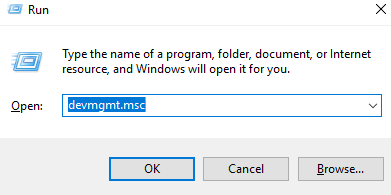
- In the Device Manager window, go to Universal Bus Controllers category and double-click on it to expand the category
- Right-click USB Root Hub option and click Properties.
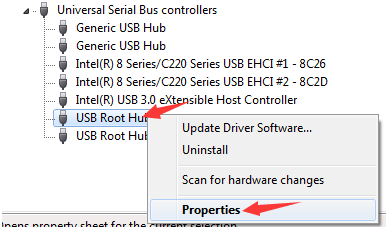
- In the USB Root Hub properties window, click Power Management tab and uncheck the Allow the computer to turn off this device to save power option
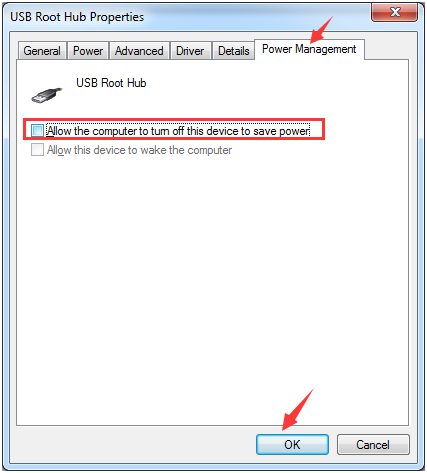
- Click OK
- Repeat the above three steps for every USB Root Hub entry in the list
- Close the Device Manager window
Try connecting a USB device to any port. If the USB device is recognized, the problem is resolved. If you still get the USB device not recognized error, move to next solution.
Solution Five – Update Drivers
You might get this error if you have outdated or corrupt device drivers on your computer. To resolve the issue you would need to update your device drivers. The easiest way to update device drivers is by using a reliable driver update tool.
Automatic driver update tools offer many benefits, the most important ones being:
- You can update device drivers automatically
- The software scans and updates all outdated or missing drivers at one go
- The tool picks the right drivers for your device and operating system, so you won’t have to worry about installing an incorrect driver by mistake
- Automatic driver updates are 100% safe
Driver Updater is one of the best driver update tools out there. Outbyte Driver Updater will give you access to a database of over 1 million drivers. It will regularly scan your PC, suggesting new driver versions to install. Driver Updater contains drivers for a variety of Windows devices. With just one click, you can update drivers in your system.
Step 1
Click here to Install and launch the app
Step 2
Scan all devices
Step 3
Install or update drivers automatically
Solution Six – Make changes to the USB Selective Suspend Settings
The USB Selective Suspend feature is a power saving option in Windows that stops power supply to selected USB port in an idle state without affecting other USB operations and USB ports. This power saving feature might be the reason behind the USB device not recognized error.
The simple solution to this issue is making changes to the USB Selective Suspend settings. Here are the steps to follow.
- Go to Start and type control in Cortana search box
- Select Control Panel from the list of results
- On control panel window, select Power Options
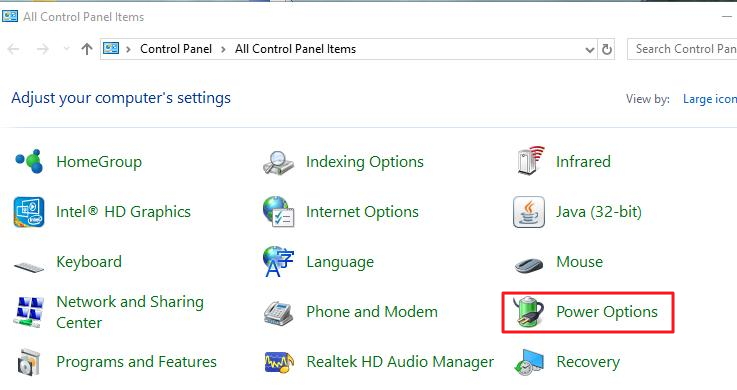
- In the next window, select Change when the computer sleeps that appears in the left pane
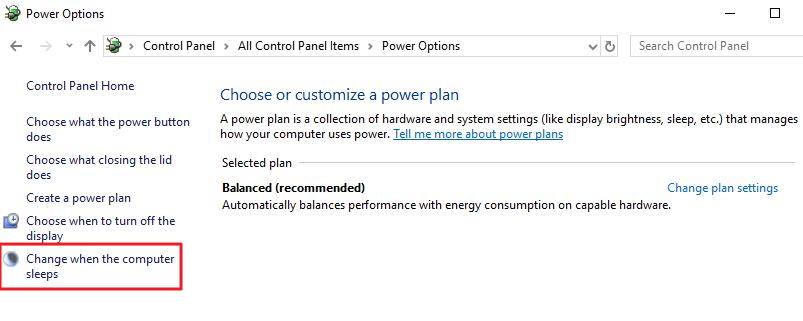
- Click Change advanced power settings
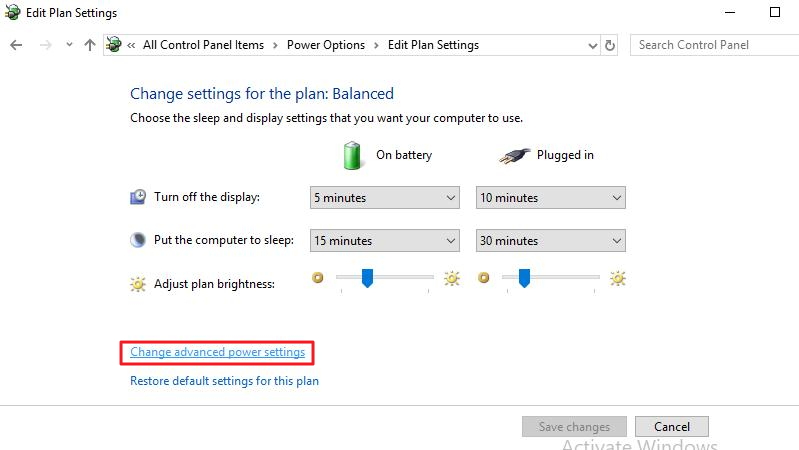
- Find USB settings and expand it
- <insert udnr – usb selective suspend>
- Expand USB selective suspend setting and disable On Battery and Plugged in options
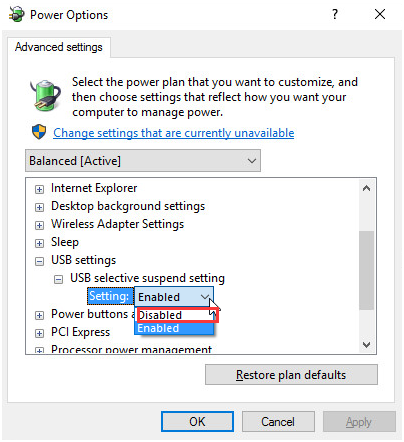
- Click Apply and then click OK
- Close all settings windows and restart your computer
Try connecting USB device to any USB port and see if the USB not recognized issue is resolved. If you are still getting the error, try next solution.
Solution Seven- Disable Fast Startup
The Fast Startup option in Windows is designed to speed up booting and save time. When Fast Startup is enabled Windows does not shut down normally, it saves the state of the system in a hibernation file which is used to load Windows during next reboot.
The Fast Startup could be the reason behind USB not recognized issue. There is a possibility Windows only remembers the USB devices that were attached to the computer prior restart. And that could be the reason Windows is not recognizing the newly attached USB device to the computer.
To rule out this possibility, disable Fast startup option which would force the Windows to load everything from scratch. Here are the steps to follow,
- Click Start and type control panel in the search box
- Click Control Panel from the list of search results
- In the Control Panel window, set the view by to Large Icons
- Click Power Options
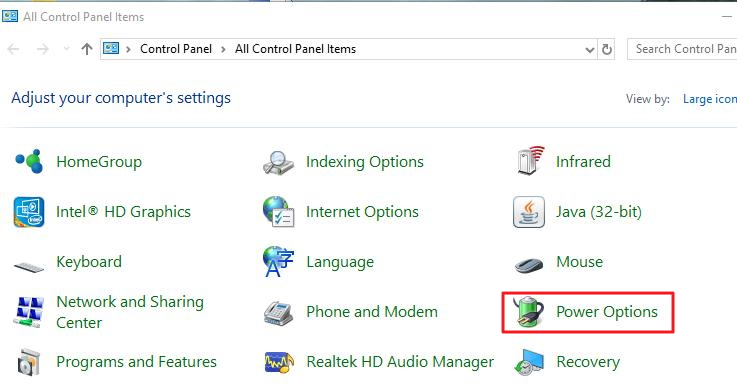
- In the Power Options window, click Choose what the power button does
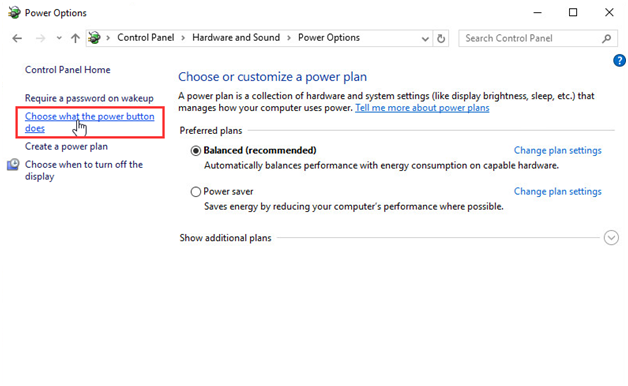
- Click Change settings that are currently unavailable
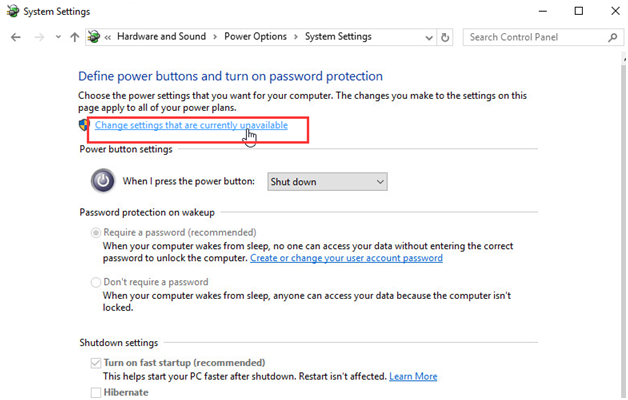
- Un-check the box corresponding to Turn on fast startup (recommended)
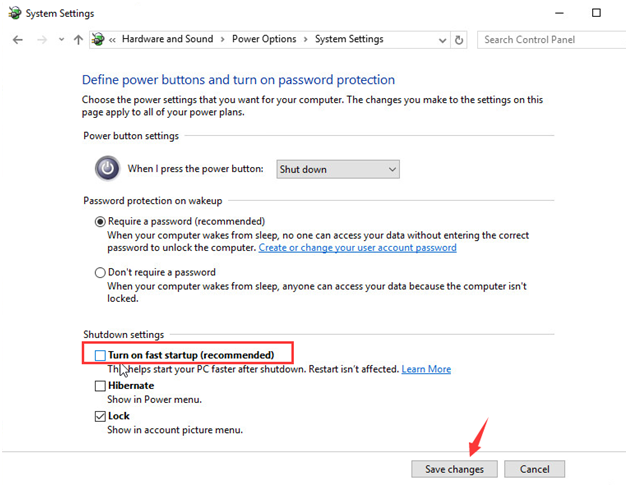
- Click Save changes to save and exit.
- Restart your computer and try connecting the USB you intend to any USB port.
In most cases, you should see the “USB device not recognized” issue is resolved.

Leave a Reply